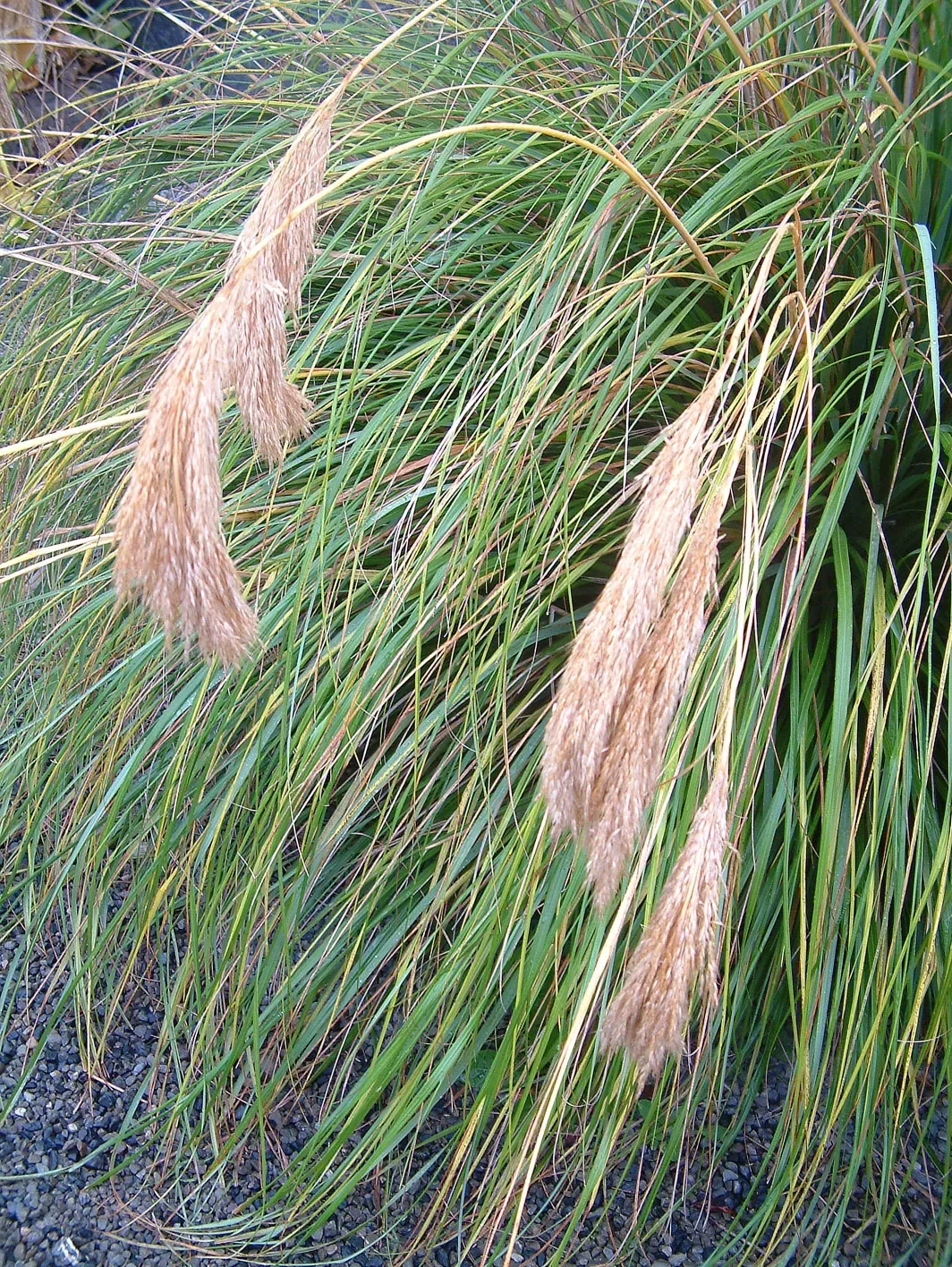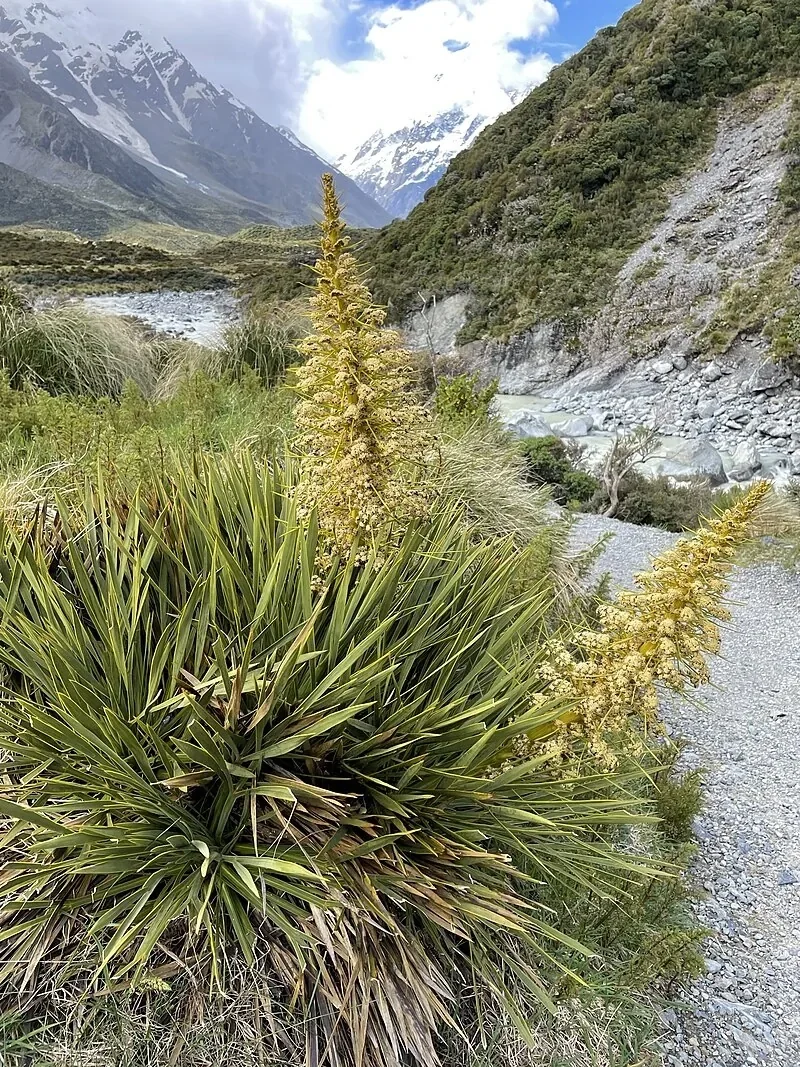
Broad-leaved Snow Tussock
Chionochloa flavicans
Introduction
Introduction Overview
Chionochloa flavicans , commonly known as broad-leaved snow tussock, is a distinctive native grass of New Zealand. This attractive tussock forms large, graceful clumps with arching leaves that catch the light, making it a striking feature in both natural landscapes and gardens. native trees .

Plant Description
Botanical Features
Broad-leaved Snow Tussock ( C. flavicans ) is a distinctive native plant with unique botanical characteristics that make it well-suited to New Zealand's diverse environments. This species exhibits typical features of its genus and family, with specialized adaptations that allow it to thrive in its natural habitat. The plant 's morphological features, including its leaf structure, growth habit, and reproductive characteristics, reflect millions of years of evolution in New Zealand's isolated environment. Understanding the botanical description of Broad-leaved Snow Tussock helps gardeners appreciate its unique characteristics and provides insight into its cultivation requirements and ecological role.
Quick Facts
| Scientific Name | Chionochloa Flavicans |
|---|---|
| Height | 0.81.2 m (2.64 ft) tall |
| Spread | 0.61.2 m (24 ft) wide clumps |
| Water Needs | Low to moderate; drought tolerant once established |
| Light | Full sun to light shade |
| Frost Tolerance | High (tolerates moderate frosts) |
| Salt Tolerance | Low (not tolerant of coastal salt) |
| Growth Rate | Slow to moderate |
| Lifespan | Long-lived (decades in suitable conditions) |
Climate Best Suited to
Distribution Map
Chionochloa is found throughout New Zealand, especially in lowland to montane regions of both the North and South Islands. It is common in open grasslands, hillsides, and along forest margins.
Chionochloa flavicans is adaptable to various climates but thrives in cool to temperate regions. It is particularly well-suited to areas with good rainfall and can tolerate exposed conditions.
| City | Suitability |
|---|---|
| Whangārei | Ideal |
| Auckland | Ideal |
| Hamilton | Ideal |
| Tauranga | Ideal |
| Rotorua | Ideal |
| Gisborne | Ideal |
| New Plymouth | Ideal |
| Napier | Ideal |
| Whanganui | Ideal |
| Palmerston North | Ideal |
| Wellington | Ideal |
| Nelson | Ideal |
| Christchurch | Ideal |
| Dunedin | Ideal |
| Invercargill | Ideal |
Plant Habitat
Natural Range
Occurs naturally on sunny slopes, bluffs, and light soils from lowland to montane zones in the North and South Islands. It favors areas with good drainage and seasonal dryness, frequently among rock outcrops or in coastal hills where salt exposure is moderate.
Plant Conservation
The conservation status of Chionochloa flavicans (specifically Chionochloa flavicans f. flavicans) is "At Risk - Declining" as of 2023, with qualifiers DPS, DPT, and RR. This is a change from previous assessments where it was listed as "Not Threatened" in 2017, 2012, 2009, and 2004.
Chionochloa flavicans is a species of snow tussock endemic to the North Island of New Zealand. It is found from the Coromandel Peninsula to Hawke's Bay, inhabiting coastal to subalpine areas, including sparsely vegetated cliff and rock faces, and talus slopes.
A different form, Chionochloa flavicans f. temata, is found only on Te Mata Peak near Havelock North and is considered a narrow-range limestone endemic.
Soil Requirements
Chionochloa flavicans grows best in:
- Well-draining soils
- Tolerates poor to moderately fertile soils
- Can handle both acidic and neutral pH
- Adapts to various soil types
Light Requirements
This tussock prefers:
- Full sun for best growth
- Tolerates partial shade
- Morning sun with afternoon shade acceptable
- Good air circulation
Water Requirements
Water needs include:
- Regular watering when young
- Drought tolerant once established
- Good drainage essential
- Tolerates periods of dry soil
Planting Guide
When to Plant
- Spring is ideal for planting
- Early autumn also suitable
- Avoid planting in extreme weather
Spacing
- 60-100 cm between plants
- Allow room for spread
- Consider mature size when planning
Ecological Role
Environmental Value
Tussock clumps slow runoff and protect thin soils on sunny banks. Inflorescences provide seeds for small birds, while dense bases shelter invertebrates and lizards. In restoration projects, broadleaved snow tussock adds structure, drought resilience, and strong visual cues of open dryland ecosystems.
Uses and Significance
Garden Uses
Ecological Significance
Ecologically, Chionochloa flavicans plays a crucial role in New Zealand\'s native ecosystems, especially in subalpine grasslands. It provides essential habitat and food for native insects and contributes significantly to overall ecosystem health and biodiversity. Its dense tussock clumps offer shelter for various native insects and lizards, making it an important component of the local fauna's survival.
Landscaping Section
Design Uses
Excellent for textural planting in coastal or inland dry sites, massed on banks, or as rhythmic repeats through gravel gardens. Combine with hebes, Libertia, and native sedges for year-round movement and contrast. Works well in containers where drainage is sharp.
Seasonal Care
Spring
- New growth begins
- Apply slow -release fertilizer if desired
- Divide established clumps if needed
- Plant new specimens
Summer
- Water during extended dry periods
- Flowering occurs in late summer
- Monitor for pests
- Remove weeds from base
Autumn
- Seeds mature and can be collected
- Good time for planting
- Reduce watering as temperatures cool
- Apply mulch if needed
Winter
- Minimal care needed
- Provides winter interest with frosted foliage
- Avoid walking on frozen grass
- Plan spring divisions
Pruning and Maintenance
Chionochloa generally requires minimal pruning. Remove dead or damaged growth as needed and shape the plant to maintain desired form. Pruning is best done in late winter or early spring before new growth begins.
How to Grow Broad-leaved Snow Tussock
From Seed
Broad-leaved snow tussock ( Chionochloa flavicans ) produces feathery plumes carrying numerous fine seeds. Collect plumes as they turn straw-gold in late summer to autumn and dry them in a paper bag; rub out the seed and winnow away chaff. Sow fresh seed onto a very free-draining seed-raising mix (add coarse sand or fine pumice) and press lightly so the seed has good contact but still receives light. Maintain bright light with excellent airflow and keep the surface just moist with a fine mister: avoid heavy watering which can dislodge seed or cause damping-off. Cool to mild temperatures (12-20 °C) suit germination, which may be staggered over 3-6+ weeks. Prick out when seedlings are large enough to handle, growing on in a gritty mix with regular light watering and full sun. Harden off and plant out into sharply drained soil; avoid rich, wet sites which reduce longevity and form.
By Division
Established clumps can be divided to refresh vigour or multiply stock. In early spring or early autumn, lift the clump carefully and split it into several firm pieces, ensuring each division includes a solid crown and active roots. Replant divisions immediately into a sunny position with very free-draining soil or into pots of gritty mix. Water to settle and then water sparingly while roots re-establish; over-watering can lead to rot. Space divisions to allow air movement, especially in humid districts, to minimise foliar rust on older leaves.
Pests and Diseases
Common Issues
- Rust: Can affect foliage in humid conditions
- Root Rot: Avoid in poorly drained sites
- Grass Grub: May damage roots of young plants
Generally hardy and resistant to most pests and diseases when grown in suitable conditions.
Cultural Significance
Traditional Uses and Values
Broad-leaved Snow Tussock ( Chionochloa flavicans ) holds cultural significance for Māori, who traditionally used various tussock species for practical purposes. The tough, fibrous leaves were used for weaving, thatching, and as a material for constructing temporary shelters. Its presence in the landscape also signifies healthy ecosystems and traditional gathering grounds.
Bonus Tip
Expert Growing Advice
To maintain the vigor and prevent dieback in your Broad-leaved Snow Tussock, ensure excellent drainage and periodically remove accumulated dead foliage from the center of the plant. This prevents moisture buildup that can lead to root rot, especially in humid conditions. While it's a low-maintenance plant, a little grooming goes a long way in keeping it healthy and looking its best.







